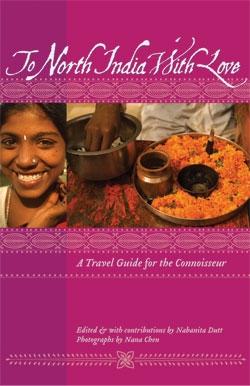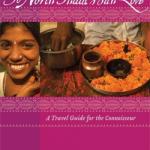Partha De Sarkar Treks to Roopkund's Mysterious Skeleton
Excerpted from To North India With Love, available from ThingsAsian Press.
The scene is utter desolation. At an altitude of 5,029 meters, nothing grows, nothing breathes, nothing survives. As if nature has deliberately thinned the air and laid down a cover of ice and snow to discourage trespassers. And hide a terrible secret.
Roopkund-a small, shallow lake with a depth of only two meters-would have been just another Himalayan water body at extreme altitude, unseen and unnamed, had it not been for what has been lying at its bottom for thousands of years: more than three hundred human skeletons, some with bits of flesh still intact on the bones. For most of the year, Roopkund freezes over and the skeletons lie undisturbed. They are entombed in ice except for one month in the summer when the lake melts.
Who were these people, I wondered, whose remains have survived a water burial for more than a millennium? What were they doing so high above the highest inhabitable point in the Himalayas? And why did they die en masse in the Roopkund? Scientists have studied the bones and reached various conclusions from their conditions: the people were of Indian descent, and of tall and heavy build; the group comprised men, women, and children; many revealed the distinguishing feature of an extra bone in their skull ... But the circumstance of their sudden death remains a matter of conjecture. There are many theories. Nothing has been conclusively proved.
I had chosen September as a good time to trek to the Roopkund. My enthusiastic party of five knew that the going would be tough-the weather at the lake was unpredictable, and there was every chance of an avalanche or two hitting the trail-but we were determined to press ahead. In Delhi, we procured ration, fuel, medicine, and a proper 4x4 vehicle, and then, after we had carefully charted our route, we set off on our eight-day journey to see the Roopkund skeletons for ourselves.
On day three, our truck reached Lohajung, our trek head at 2,133 meters, from which point we would begin to negotiate deep Himalayan valleys, alpine meadows, dense forests, and steep rock faces on foot. Getting to Roopkund itself was an adventure, and the lore and legends we heard along the way added mystery to every sight and reinforced the this-must-be-a-dream sensation that comes with such high altitudes. The lack of sufficient oxygen plays tricks on the mind, and we were ready to believe anything.
The fright we got at 3,558 meters at Patthar Nachani, for instance, may sound a little foolish in the retelling, but I dare anybody to enjoy a peaceful night in the creepy atmosphere of that campground after hearing the legend of how the place came to get its name. Patthar Nachani, or Stone Courtesans, was where an ancient king and his party once set up a rest camp during a pilgrimage. A troupe of nubile, dancing girls accompanied the party, and the king was so excited by their sensuous performance that he cancelled the pilgrimage and gave himself up to the pleasure of wine and women. Now, Nanda Devi, the goddess of the mountains in these parts, wasn't happy with the king at all, and she turned the courtesans to statues of stone to teach him a lesson. The statues do not exist anymore, but the ghosts of the courtesans came to dance in our dreams, driving off any chances of a good night's rest.
The highlight of the trek to Roopkund was the viewing of the most sacred and rare of Indian flowers: the Divine Lotus, or Brahma Kamal. We were told that the flower, with its ethereal, translucent white petals, typically blooms only once in fourteen years, and that too at midnight. It was a pure stroke of luck that we happened to be there at just the right time. The viewing of the Divine Lotus was supposed to bring good fortune, and we were grateful for that-given the unpredictability of the weather at this altitude, we needed all the hallowed help we could get. A group of French backpackers returning from the lake had just given us some bad news. The weather had turned inclement with wind, rain, and sleet. We prayed for improved weather on this last leg and hoped the Divine Lotus would live up to its promise and see us through.
The final bit of the trek up to Roopkund was terribly steep. A howling wind threatened to unbalance us every step of the way, so the going was slow. But by early afternoon, we had made it. The mysterious Roopkund was finally before us.
I stopped for a long minute, looking across at the lake in the distance, trying to imprint this first glimpse forever in my mind. It lay in a shallow sort of a crater, a murky pool of green water, with gray stones rising a few feet around it. From that distance, the skeletons were not visible, but as we ventured closer, we could identify frozen bits and pieces of long-dead humans. A yellowed hand balanced against a rock, its fingers black and twisted with time. A collection of human skulls and thigh bones. Rib cages. Teeth. Scraps of clothing, sandals, and tufts of hair, swept, by a traveler or a researcher perhaps, into neat little piles.
We walked around the lakeside silently, looking in awe at the grizzly display, not daring to touch or even get very close to the skeletons. We didn't want to disturb their peace. There have been reports of people carrying away bones and skulls from here as trophies of their trip, and I couldn't imagine how anyone could do such a thing.
By late afternoon, the bitterly cold wind had picked up again. It would be foolhardy to push our luck and hang around much longer, so we regrouped and turned to look at Roopkund one last time. Curiosity had brought us this far up, and we had now seen the skeletons for ourselves. But the questions remained, and Roopkund maintained its silence. As we left, it was with the uncomfortable feeling that the lake was willing us to go, so the atmosphere could be still again, the snow could cover all evidence of our interruption, and Roopkund could return to guarding its secret once more.
FACT FILE:
Trekking to Roopkund
It is advisable to let expert tour operators handle all arrangements if you are planning a trek to the Roopkund. Knowledge of the terrain is crucial, and you'll be a lot safer in their hands. The tour operators will organize everything from equipment to accommodation. To learn more about Roopkund, seek out Riddles of the Dead: Skeleton Lake, a documentary that has been shown on the National Geographic channel.
 ThingsAsian
ThingsAsian
















